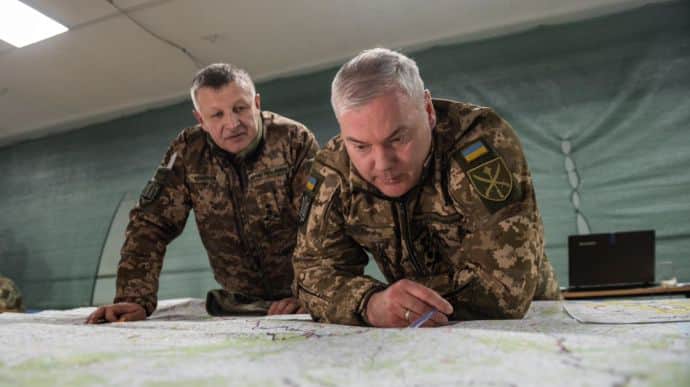Ukraine's Joint Forces Commander reveals how troops managed to secure access to Black Sea in country's south

Lieutenant General Serhii Naiev, Commander of the Joint Forces of the Armed Forces of Ukraine, has stated that intelligence data and combat efficiency of the Ukrainian artillery and aircraft against the Russians helped to thwart Russia's plans to seize the Black Sea coast in Mykolaiv and Odesa oblasts at the onset of a full-scale war.
Source: Serhii Naiev in a column for Ukrinform news agency
Details: Naiev explained that he was able to anticipate the date of the full-scale invasion by Russia before 24 February 2022, and it allowed for the Defence Forces of the Armed Forces of Ukraine to be deployed rapidly. As mobilisation efforts began, forces strengthened, territorial defence brigades were formed, and the reserve corps was deployed.
Naiev says that "thwarting the enemy's plans to gain full control over the Ukrainian Black Sea coastline" was another strategic task.
In early March 2022, the Head of Defence Intelligence of Ukraine reported that intelligence analysis indicated that the next day, the Russians could launch an offensive through Voznesensk along the administrative border of the Mykolaiv and Odesa oblasts and all the way to the border with Moldova.
After consulting the Defence Intelligence head, Naiev ordered Major General Andrii Kovalchuk, Commander of Operational Command Pivden (South), to redeploy part of the troops to the Voznesensk area. He also instructed Colonel Vitalii Pakhomov, the head of the fire impact group, to move all fire impact assets (artillery, aircraft) in a way that would "inflict maximum damage on the enemy."
Quote: "The forecast came true: the next morning, the enemy began advancing towards Voznesensk. However, they were met by a unit of paratroopers from the 80th Separate Airborne Assault Brigade, which, for over a day, destroyed enemy armoured vehicles and personnel. The remaining enemy units attempting to advance were "crushed" by artillery and aviation concentrated by the Defence Forces on that front.
The very first enemy tank that was moving across the bridge in the area of Voznesensk was blown up along with the bridge, effectively "bottlenecking" a part of the enemy forces. The occupiers, with forces of up to ten battalion tactical groups, constantly attempted to find a way to bypass Voznesensk.
If the enemy had managed to pass through Voznesensk along the administrative borders of the two regions to the border with Moldova, Russia would have had the opportunity to conduct a maritime landing in Mykolaiv and Odesa oblasts. This would have allowed the enemy to potentially occupy not only the coastal cities of Mykolaiv and Odesa but the entire oblasts.
In such a scenario, Ukraine would have been deprived of access to the Black Sea, and the ports in Odesa, Chornomorsk, Yuzhne, and Reni simply would not have functioned. Our economy would not have withstood such a situation.
However, all enemy battalion tactical groups in the areas of Voznesensk, Nova Odesa, and Bashtanka came under intense fire from Ukrainian defenders. Aircraft conducted 5–6 sorties per plane, and artillery spared no ammunition. As a result, the enemy suffered such significant losses over 6 days that they were forced to abandon the offensive."
Background: In April 2022, deputy commander of the Central Military District of the Russian Federation called one of Russia’s main goals in the war the establishment of "complete control over Donbas and southern Ukraine" in order to gain land routes to occupied Crimea and unrecognised Transnistria (Moldova).
Support UP or become our patron!







